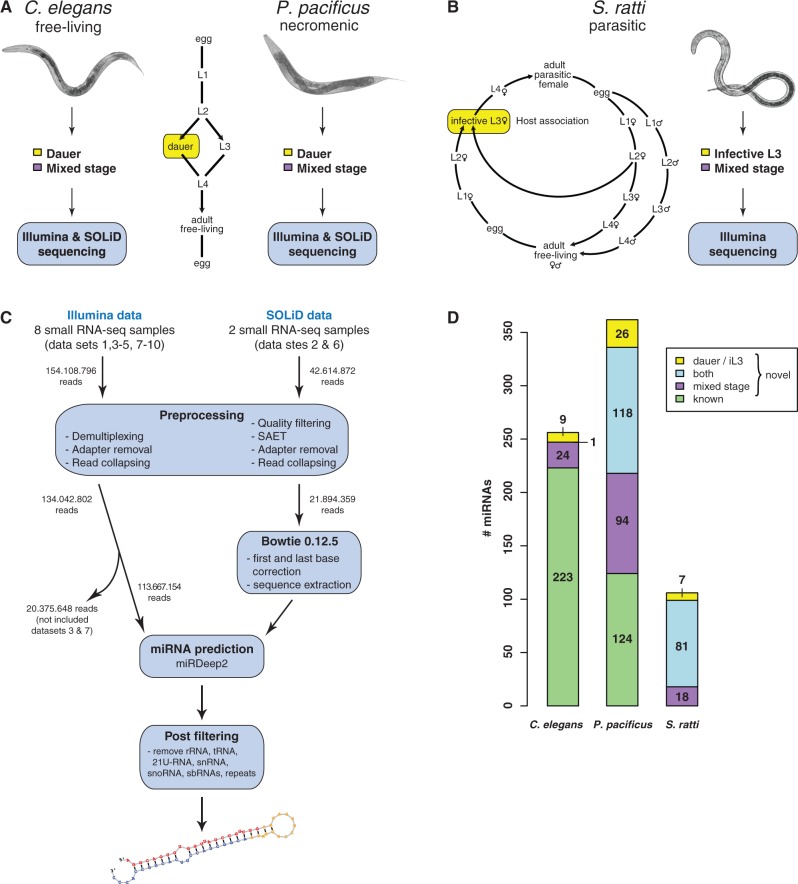Fig. 1.—
Experimental setup and computational workflow. Life cycles of Caenorhabditis elegans, Pristionchus pacificus, and Strongyloides ratti. (A) Under favorable conditions for reproduction, larvae of C. elegans and P. pacificus develop through four larval stages. Under unfavorable environmental conditions, L2 larvae enter dauer diapause. (B) Infective larvae of S. ratti develop either directly or after facultative sexual free-living adult generation. Multiplatform small RNA deep sequencing was performed on mixed and dauer stage samples of C. elegans and P. pacificus. Illumina high-throughput profiling was carried out on mixed and infective stages of S. ratti. (C) Schematic overview of in house developed miRNA prediction pipeline. (D) miRNA gene complement in all three species, including novel gene candidates (note: several genes occur multiple times in the genome).

